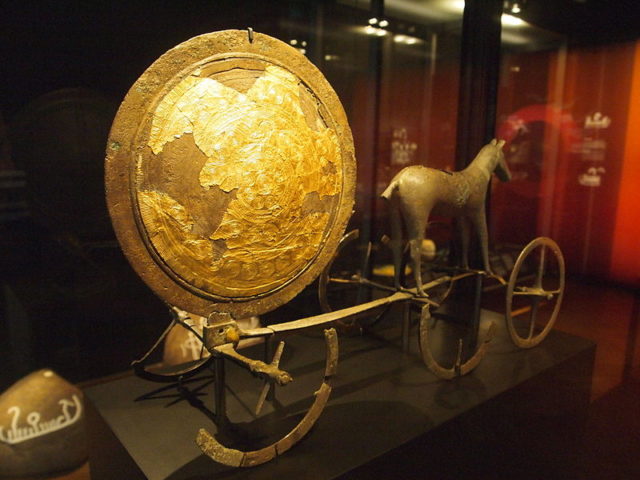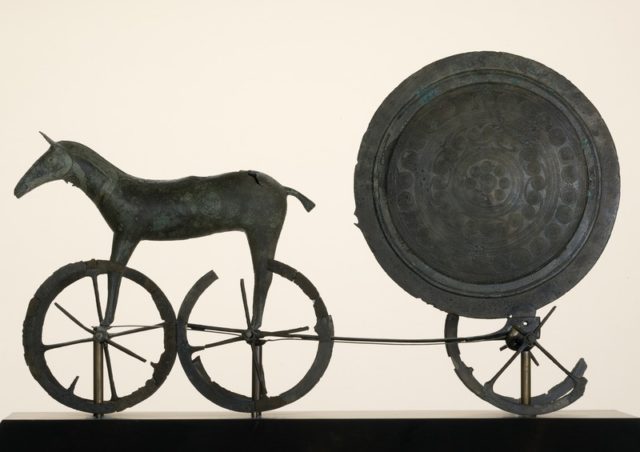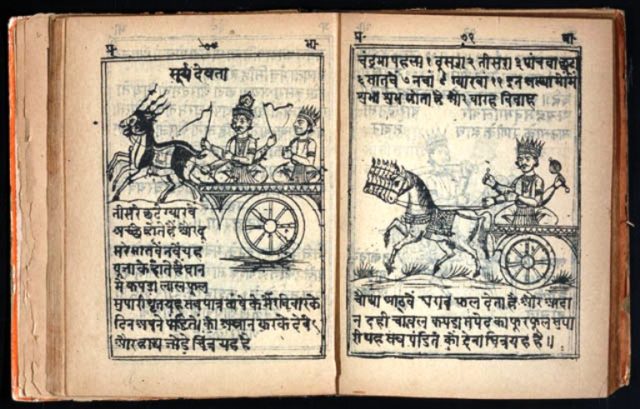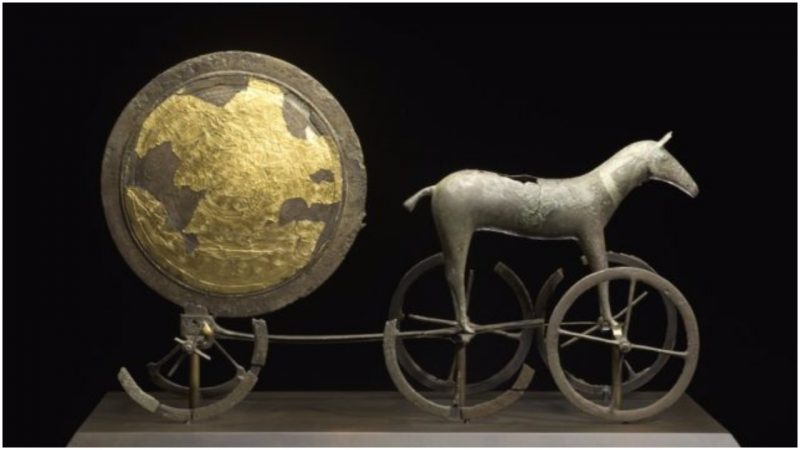In September of 1902, when a farmer in northwest Denmark was working in a field that had previously been a peat bog, he discovered a very unusual item.
It was a small bronze horse on wheels, pulling a chariot carrying a bronze disk layered with gold. The disk was meant to represent the sun, though only on one side. According to Norse legend, a divine horse pulled the sun from east to west, and the wheels represented the sun’s motion. While the gold side was the shining sun, the other side represented the shadowy underworld at night as the horses pulled the chariot back, from west to east.
Norse myths were preserved orally long before being written down. In Norse mythology, Sól represents the goddess of the sun, while the corresponding Old English name is Siȝel. Sunna was the High German Sun goddess representing the sun. Sól rode daily through the sky on her chariot, pulled by the two horses Arvak and Alsvid. The sun chariot has been interpreted as signifying a Bronze Age forerunner to Sunna. The sun-god is a common thread in ancient religions and mythology. The chariot trip of the sun across the sky is part of Celtic, Hindu, Egyptian, and Greek mythology.
The National Museum of Denmark tentatively dates the artifact to about 1400 BC, but it was recovered long before precise dating methods were created. The item measures 25 inches in length, 13 inches in height, and 11 inches deep. Some archaeologists believe the Sun Chariot is too small to be used in religious ceremonies, while others believe it was used to illustrate the path of the sun across the sky, an important concept in Old Norse religions. Other representations show the sun as being guided across the heavens by ships, fish, seabirds, and snakes.

Ninety years after the discovery of the Sun Chariot, archaeologists returned to the site and scanned it with a metal detector. An additional 21 objects were discovered–mostly wheel rings, axles, and spokes. The parts were added to the Sun Chariot, giving it a more complete appearance.

Experts have yet to find solid proof as to when domesticated horses arrived in Europe. It is assumed horses were used to pull carts and plows, as there is currently no evidence horses were actually ridden during the Bronze Age (4500 BC to about 500 BC), so named because it was the period when humans began crafting tools from bronze.

The Sun Chariot was cast using the lost wax method. A wax model over a clay core was created for each piece and then was enclosed in clay. Any designs were carved into the wax; the model was fired until the wax melted, leaving a clay mold ready to be filled with molten bronze. Usually, other alloys were added to strengthen the bronze. A fault along the back of the Sun Chariot’s horse allowed museum workers to observe the clay core.

Excavations have also been done in Jægersborg Hegn, a national deer park found in the same area as Trundholm. A disk remarkably similar to the one in the Sun Chariot was among the artifacts found, causing archaeologists to think there are more of these relics than originally thought.
Read another story from us: 1,000-year-old Viking tools have been unearthed in Denmark
In 2010, the Sun Chariot was featured on the 1,000-krone banknote and has become a national symbol in Denmark. The Sun Chariot itself is on display at the National Museum of Denmark in Copenhagen.
